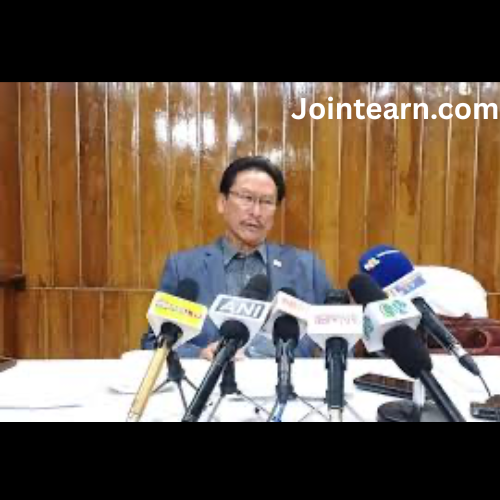Congress leader Rahul Gandhi’s recent press conference in Delhi took an unexpected international turn when a photograph he presented as evidence of alleged electoral fraud in Haryana turned out to belong to a Brazilian model. Gandhi, who has long been vocal about what he calls “vote chori” in Haryana, claimed during his “H Files” presser on Thursday that a single woman’s photograph had appeared 22 times in voter rolls under names such as Seema, Sweety, and Saraswati. He described the image as proof of a “centralised operation” designed to manipulate election outcomes, alleging that it cost the Congress victory in the 2024 Haryana assembly elections.
During the presser, Gandhi displayed a photo of a woman and stated: “Who is this lady? What is her name? Where does she come from? But she votes 22 times in Haryana, at 10 different booths, and has multiple names.” The photograph, he claimed, had appeared repeatedly in voter lists for the Rai assembly constituency, forming the basis for his allegations of large-scale electoral malpractice. Gandhi further mentioned that the image could be traced online to Matheus Ferrero, a Brazilian photographer.
Tracing the Image
Independent searches revealed that Matheus Ferrero is indeed a Brazilian photographer whose portfolio includes portraits and fashion photography. Many of his images, including the one used by Gandhi, are publicly available on platforms such as Unsplash. The discovery quickly drew attention from media outlets and internet users, sparking a wave of curiosity about the woman in the photo and how her image could have allegedly been used in Indian voter lists.
The Model Speaks Out
Hours after the press conference, a woman identifying herself as the model in the photograph appeared in a video responding to the controversy. She claimed that the image shown by Rahul Gandhi was of her when she was around 20 years old. A reverse image search and analysis of the video confirmed her identity as Larissa Nery, a Brazilian model. Larissa later reposted screenshots of her reaction video, which had been widely circulated on social media, to her Instagram story.
Speaking in Portuguese, Larissa appeared stunned by the sudden attention. AI-generated translations of her remarks suggest she was both surprised and amused by the situation. In the video, she said: “Folks, let me tell you the gossip. You’re laughing too much, aren’t you? I’m going to tell the gossip. Folks, they are using an old photo of mine. My photo is old, okay? Look, I was very young in the photo. [I must have been] about 20 years old, 18 years old.” She expressed disbelief that her photograph was allegedly being portrayed as an Indian woman in connection with an election in India, saying: “They are using a photo of mine to run, I don’t know if it’s an election, something where you have to vote. And in India, they are portraying me as an Indian woman to scam others, folks.”
Media Frenzy and Unexpected Attention
Larissa admitted she was overwhelmed by the sudden surge of attention from reporters and social media users. “Oh my god, how crazy. What madness is this, what world are we living in?” she said, describing how journalists began reaching out to her directly, even calling the salon where she works. She recounted: “Then a reporter called me wanting to know about this thing. [He] called the salon where I work, wanting to talk to me for an interview. So I didn’t answer… The guy found my Instagram, called me on Instagram.”
The model explained that she had been flooded with messages from people curious about the photograph, some of whom sent her the viral image that had circulated widely online. Despite the attention, she maintained a humorous and light-hearted tone, clearly bewildered by the notion that her image had become part of a political controversy halfway across the world.
The Broader Context
Rahul Gandhi’s press conference intended to highlight what he claimed was systematic manipulation of voter rolls in Haryana. By showing the same photograph used multiple times under different names, he sought to illustrate instances of fraudulent voter entries. However, the revelation that the image belonged to a Brazilian model introduced an unexpected twist, drawing both domestic and international attention.
Social media users quickly connected the dots to Matheus Ferrero, whose portfolio features numerous portraits of models like Larissa. The photographer’s work, available online, is often used freely under certain licensing agreements, which may have made the image accessible for such misuse. This incident highlights the ease with which publicly available images can be misappropriated, intentionally or otherwise, in the digital age.
Public Reaction and Virality
Screenshots of Larissa’s video and her subsequent reactions have since gone viral across platforms like X (formerly Twitter) and Instagram. Social media users expressed a mix of amusement, surprise, and concern over the mix-up. Many were puzzled that a photo of a young Brazilian model could be linked to alleged voter fraud in Haryana, while others used the incident to discuss the broader implications of image misuse in political campaigns.
Larissa’s reaction was candid and humorous, as she attempted to explain the bizarre situation while remaining composed despite the attention. Her experience underscores how global digital visibility can lead to unexpected intersections between public figures, political events, and personal privacy.
Conclusion
The episode involving Rahul Gandhi’s claim and Larissa Nery’s image serves as a striking example of how digital media can complicate political narratives. While Gandhi aimed to highlight potential irregularities in Haryana’s voter rolls, the use of an internationally sourced photograph drew attention away from the original allegation and toward the unintended consequences of sharing unverified images in political discourse.
Larissa, meanwhile, has been thrust into the spotlight in a context she never anticipated, navigating media attention from multiple continents while maintaining her composure. The incident serves as a reminder of the global interconnectedness of social media and the potential for digital content to traverse borders in ways that can have unexpected political and personal ramifications.


Leave a Reply